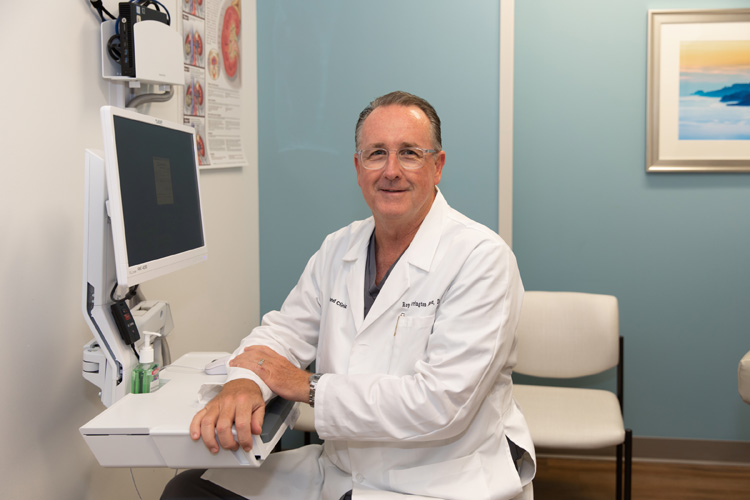Prostate cancer, says the American College of Clinical Oncology, “is the most common cancer among men after skin cancer.”
“This year,” the ACCO continues, “an estimated 174,650 men in the United States will be diagnosed with prostate cancer.”
The prostate gland is a male reproductive organ whose main function is to secrete prostate fluid, one of the components of semen. The muscles of the prostate gland also help propel this seminal fluid into the urethra during ejaculation.
So, prostate cancer is a disease that discriminates on the basis of sex and, as it happens, age as well. Approximately 60 percent of all cases are diagnosed in men over 65. It rarely occurs before the age of 40.
The good news?
The death rate from prostate cancer has dropped by more than half since 1993, thanks in no small part to better diagnostic and surgical techniques now in use.
Cleveland Clinic Indian River Hospital urologist Dr. R. Carrington Mason points specifically to the Da Vinci Surgical robot which, he says, “over the last 12 to 15 years, has become the surgical choice for treatment of prostate cancer.”
Fully aware that the term “robot” still has some negative connotations to some people, Mason explains, “the surgical robot is just another tool. It’s like we’re using forceps or a hemostat in the operating room. It’s all controlled by the surgeon who is in the same room as the patient. It’s not as though there’s anything that’s being independently done by the robot itself.”
And, according to Johns Hopkins Medical, the device’s “tiny-wristed instruments offer a range of motion far greater than the human wrist.”
Mason explains: “The human wrist is limited in terms of what it can do because of its size. The space down in the pelvis, where we’re working with the prostate, sometimes is three-and-a-half inches across and sort of down at the bottom of a bowl. Your hand would fill that space, whereas the surgical robot can get in there and sew and cut and manipulate the tissues in a manner that the human hand wouldn’t be able to achieve because of the size difference.”
The University of Florida’s College of Medicine adds, “for patients with clinically localized prostate cancer, nerve-sparing robotic prostatectomy provides patients with a safe and minimally invasive technique for removal of the prostate gland, while preserving as much of the surrounding nerve structures responsible for penile erections” as possible.
Perhaps the key phrase there is “minimally invasive.”
As Johns Hopkins points out, in this advanced surgical system, “miniaturized robotic instruments are passed through several small keyhole incisions [about 1 centimeter each] in the patient’s abdomen. The surgery is performed without the surgeon’s hands entering the patient’s body cavity.”
With the confident ease of a surgeon who has performed over 1,000 such robotic prostate procedures, Mason continues, “we go through the abdominal cavity in front of the rectum to immobilize things at the upper portion of the prostate. We then make an incision across to drop the bladder down. Then we separate the prostate from the bladder coming in anteriorly and then we go around laterally and take down the side pedicles of the prostate to remove it.”
The result? Smaller incisions, reduced pain, less blood loss, lower transfusion rates and shorter hospital stays than the conventional radical retro-pubic prostatectomy, which involves an abdominal incision that extends from the belly button to the pubic bone.
But, as Mason freely admits, no procedure is foolproof. And no procedure works all the time in every case. “What I do,” Mason says, “is I try to localize the patient’s stage and then just give them the options and statistics of what their particular stages are and they get to choose what treatment modality fits their lifestyle and desires.
“People who want to have surgery are the people who want to know, quote unquote, ‘Did we get it all?’ People who want to pursue the radiation modalities [for their prostate cancer] don’t want to have the physical encumbrance of having a procedure done and they’re comfortable with waiting a few years to know whether we’ve gotten it or not.”
Either way, the quietly confident Mason points out that once prostate cancer has started to spread or “metastasize” to other tissue or organs, “it’s essentially incurable and then you have medical management that’s undertaken to try to prolong the patient’s life.”
Dr. R. Carrington Mason is with Cleveland Clinic Indian River Hospital. His office is at 3450 11th Court, Suite 303 in Vero Beach. The phone number is 772-794-9771.

